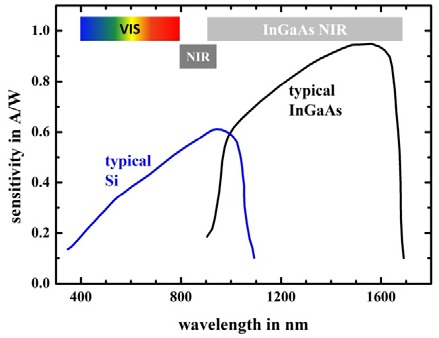Why does LiDAR have a specific wavelength? Part.1

LiDAR wavelength is in the infrared range due to detector efficiency.
Among all the existing wavelengths, why would one use infrared instead of other ones (UV, visible)?
Most LiDARs wavelengths are in the infrared range as is the case for YellowScan systems: 903 or 905 nm.
One of the objectives of the LiDAR system is to emit a wave that does not interfere with other sensors (i.e. camera, human eye). For that reason, LiDARs wavelength is mainly located in the near infrared part of the electromagnetic spectrum (750 nm to 1.5µm).
This range is divided in two parts: one from 750nm to 1.1 µm and the other one from 1µm to 1.5µm. For the first one, the best material for the detector is silicon, as it has the best optical response within this range. In fact the maximum optical efficiency is located around 900nm. After that value, the efficiency drops drastically near 0, and that is why another kind of material is generally used for longer wavelength (for example gallium arsenic (InGaAS)).
Nevertheless, InGaAs also works for 900nm wavelength with a good efficiency, but the intrinsic noise is higher than for silicon ones. This might make the point cloud rendering much noisier.
For embedded systems such as YellowScan ones, silicon is a suitable component for LiDAR sensors (in terms of component size, price and adaptability).

As a complementary information, you can read why atmospheric absorption of solar radiation also determines LiDAR wavelength.
N.B. Author Léa Moussi. The content of this article is protected by copyright.



